In the previous blog we looked at the wider curriculum issues associated with flow. This time we home in closer and take a look at some practical ideas that may pave the way and enable learners to experience flow in your classroom.
What you are trying to develop is learners who:
- Understand that learning is something they do naturally and can learn to do better.
- Build their skills of setting challenging goals, selecting tricky challenges and monitoring their action
- Become aware of what it means to be engrossed in what they are doing and how this helps learning.
- Recognise that this deep concentration feels good and makes them feel satisfied.
Basically students need to understand that if they choose a trivial goal (in anything), success doesn’t provide enjoyment; there’s no satisfaction in doing something easy.
Here are a few ideas to try, to monitor and to try again…better.
1. Raise students’ awareness of being absorbed/engrossed
Build a display entitled ‘We all get absorbed in different things’.
Take photographs of the children when you see them engrossed in different activities in the classroom, playground, dinner hall etc.
Constantly update the display and use as a reminder and to explore what ‘being absorbed’ looks and feels like.
2. Explore absorption by extending the language
Discuss being absorbed
Encourage students to think of times when they have become really absorbed in something. Include yourself in thinking:
“ What were you doing? ” “ Think about all areas of your life ” “ What did it feel like? ” “ What sorts of things keep you absorbed? ” “ What sorts of things do you become absorbed in at school? ” “ How long are/were you absorbed for? ” “ What helps you stay absorbed? ” “ What gets in the way of being ‘lost’ in something? ”
Relate being absorbed to well known sayings
What do we mean when we say ...
‘Time flies when you’re having fun’.
‘I lost all track of time’.
3. Develop the dispositions and skills needed for flow
a. Thinking ahead: rehearsing the future
Encourage pupils to articulate what they are trying to achieve and visualise end results. This technique is useful for students of any age.
Visualisation is a way of conditioning your brain for successful outcomes. The more you mentally rehearse your performance, the more it becomes habituated in your mind.
Think of visualisation as a pre-activity walk-through, helping you to think through what you will be doing and what you want to achieve in advance of actually doing it. It eliminates some of the unknowns and allows the student to rehearse the future in their mind’s eye.
- Talk through what they are going to be doing.
- Suggest they close their eyes and guide them through what they will do/achieve.
- Encourage them to talk each other through it for themselves.

The point is to slow the learning down and give students the time to think in advance of committing to action.
b. Shifting ideas about what is real achievement in learning
Invite your students to brainstorm their own definitions and come up with a list.
An achievement is something;
- you can be really proud of
- you have never done it before
- that you kept trying to do and finally succeeded
- you have done what you found difficult
- you have worked hard to finish
- you have done what teachers tell you is good
Notice that all these are aimed towards a growth mindset and a feature of flow experiences. Make sure your praise matches these statements. You could use any one of these to group student’s learning on a wall display.

c. Make goal setting more effective using ‘If-then’ planning
If you want students to change their behaviour it’s a good idea to help them to think much more closely about the ‘hows’ and the ‘whats’.
Motivation research proposes an effective solution called ‘if-then’ planning.
‘Ifs’ are the situations you want to remind yourself about. They are the triggers that stimulate the ‘Thens’
‘Thens’ are what you will do about something; the action you will take whenever the ‘If’ happens.
How to plan ‘If-then’
When setting a goal students need to specify what they will do and also when they need to do it.
If (or when) [___situation__], then I will do [___behaviour__]
The ‘if-then’ plan succeeds because the situation and the action become linked in the mind. The brain recognises the situation as an opportunity to advance the goal. When the situation is detected action is initiated automatically.
Examples:
If I’m not sure what my goal is, then I will try and picture it ( visualise) in my mind ( head)
If I’m am going to start working on a goal then I will think about what and how I need to do it. I’ll make a plan even just in my head.
If I’m getting confused about a goal ( outcome, objective) then I will look at the success criteria to help me get back on track.
When I’m assembling a story then I’ll use xxx planning tool.
d. Draw out absorption behaviours used in a Visible Thinking Routine
Think, Puzzle, Explore – A routine that sets the stage for deeper, independent inquiry and the opportunity for absorption.
At the outset of a topic, ask these three questions:
- What do you think you know about this topic?
- What questions or puzzles do you have?
- How can you explore this topic?
The first helps students to connect with prior knowledge, allowing you to understand what they do and don’t already know/understand. This aspect alone helps you to shape the upcoming learning to their existing understandings and hence students are making an input into curriculum design.
The second invites curiosity and begins to identify lines of enquiry that they might wish to pursue. Students’ questions, not ours, are much more likely to engage their interest and pave the way for absorption.
The third (which you may choose to delay until questions 1 and 2 have been sorted) offers students the opportunity to make decisions about what they want to explore and how they want to explore it.
4. Edge towards educational strategies that offer students greater involvement
a. A tool to guide problem based learning
A graphic organiser that is much used in primary schools to help pupils to plan their approach to an investigation or problem. The TASC wheel, derived from Thinking Actively in a Social Context, is a framework that helps develop thinking and problem-solving skills. With TASC, learners can think through a problem to the best outcome – and understand why it’s the best outcome.
TASC will guide pupils through the stages of thinking and problem-solving in an organised way, starting at one o’clock working clockwise. If you have a complex or wide-ranging problem you want to tackle, it offers a means of organising and synthesising a range of ideas.
Much like PEE (Point / Evidence / Explain) that helps students to structure a paragraph, the TASC wheel gives a clear way of helping students to sequence what they do to undertake an investigation.
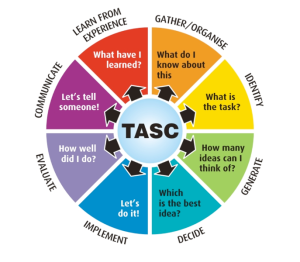
b.Design and implement ‘wild tasks’.
Much of the time, classrooms are structured to ‘deliver’ the curriculum. Tasks are carefully designed by teachers to ensure that every child gets their pre-determined dose of curriculum content, content that can be assessed so that progress can be evidenced. But what if we occasionally design tasks that are ‘wild’, that have no pre-determined outcomes, that give learners free rein to explore areas of their own interest?
David Perkins, co-director of Harvard’s Project Zero, describes a continuum between tame and wild ideas in school curricula. Tame ideas tend to be closed learning experiences with defined input and predictable output. Tame ideas are bountiful in many school curricula: five paragraph essays, standard algorithms for long division and textbook science, for example. Wild ideas, on the other hand, are unpredictable, open experiences that are harder to find.
A good way to start on wilding tasks is to have a Problem of the Week. These problems allow you and students to move away from the comfort of the curriculum and step into wilder areas. These problems are complex, messy, somewhat obscure but not impossible to solve if one persists.

An example 'wild' task
An example Wild Task that we found on the internet that is sufficiently complex to intrigue you! It involves a camel crossing the desert.
Camila Camel’s harvest, worth its weight in gold, consists of 3,000 bananas. The market place where the stash can be cashed in is 1,000 miles away. However, Camila must walk to the market and can only carry up to 1,000 bananas at a time. Furthermore, being a camel, Camila eats one banana during each and every mile she walks (so Camila can never walk anywhere without bananas). How many bananas can Camila get to the market?
- sufficiently wild because it is not solvable by any simple algorithm
- sufficiently tame so that many people feel they have some entry point to start working on it
- Wild enough to allow for several different approaches, tame enough to be accessible to a wide range of maths learners.
It does have a best answer (highest number) but actually there are many good answers that are perfectly acceptable approximations. Success at finding a solution is much more dependent on flexible thought and the ability to discern a pattern in the data than it is with formulas. It is a wonderfully wild problem that can be cultivated using relatively straightforward maths skills in new and inventive ways.
c. Make a start on offering students more responsibility for their own learning
Begin by asking students to identify questions to which they would like to know the answer – sometimes called, ‘big awe and wonder questions’. You may choose to sift them so that everyone chooses from a range of questions that the class consider of greatest interest rather than allow complete freedom of choice. Students then design and undertake their own enquiry into their preferred area of interest, maybe, as a home learning project. Agreed, you couldn’t operate like this all of the time (or could you??!!), but once in a while? What could possibly go wrong? What might the benefits be?
Read about a school that does this . . .
A school that timetabled experiences structured to enable flow
Hallbankgate Primary School ( we came across them in Flow blog 3) is nestled near to the Cumbrian Fells. Here’s how they structured a home learning project focused on ‘the world around me’.
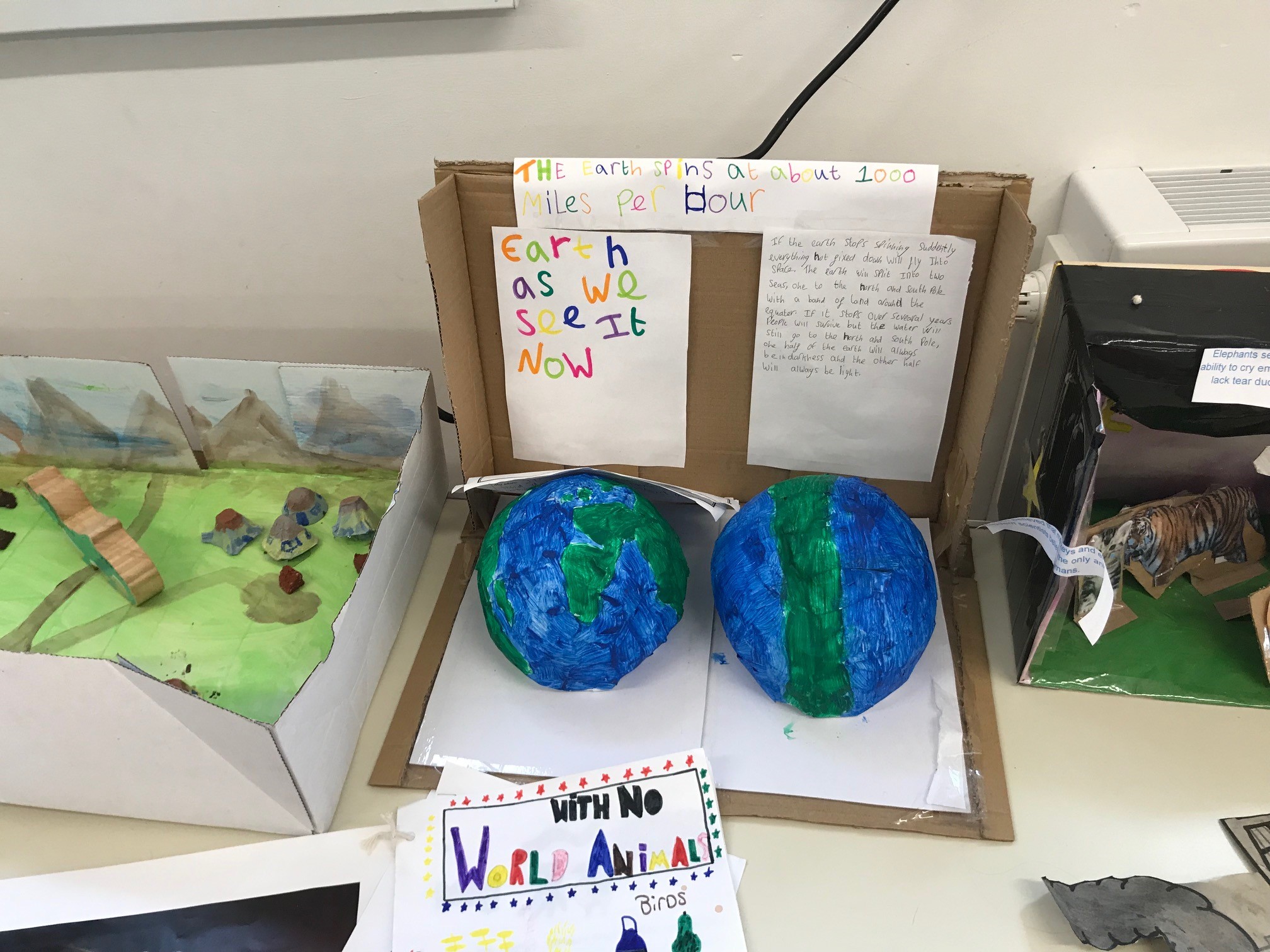 Children are challenged to design independently a home learning activity inspired by a ‘big’ awe and wonder question about the world around them. They draft various questions before deciding on the one that would stretch their learning and knowledge of the wider world. They also select the most appropriate learning behaviour to simultaneously stretch during this challenge. They use a planning tool where they;
Children are challenged to design independently a home learning activity inspired by a ‘big’ awe and wonder question about the world around them. They draft various questions before deciding on the one that would stretch their learning and knowledge of the wider world. They also select the most appropriate learning behaviour to simultaneously stretch during this challenge. They use a planning tool where they;
- list the resources they need to capitalise on
- foresee possible obstacles
- identify possible solutions from the outset.
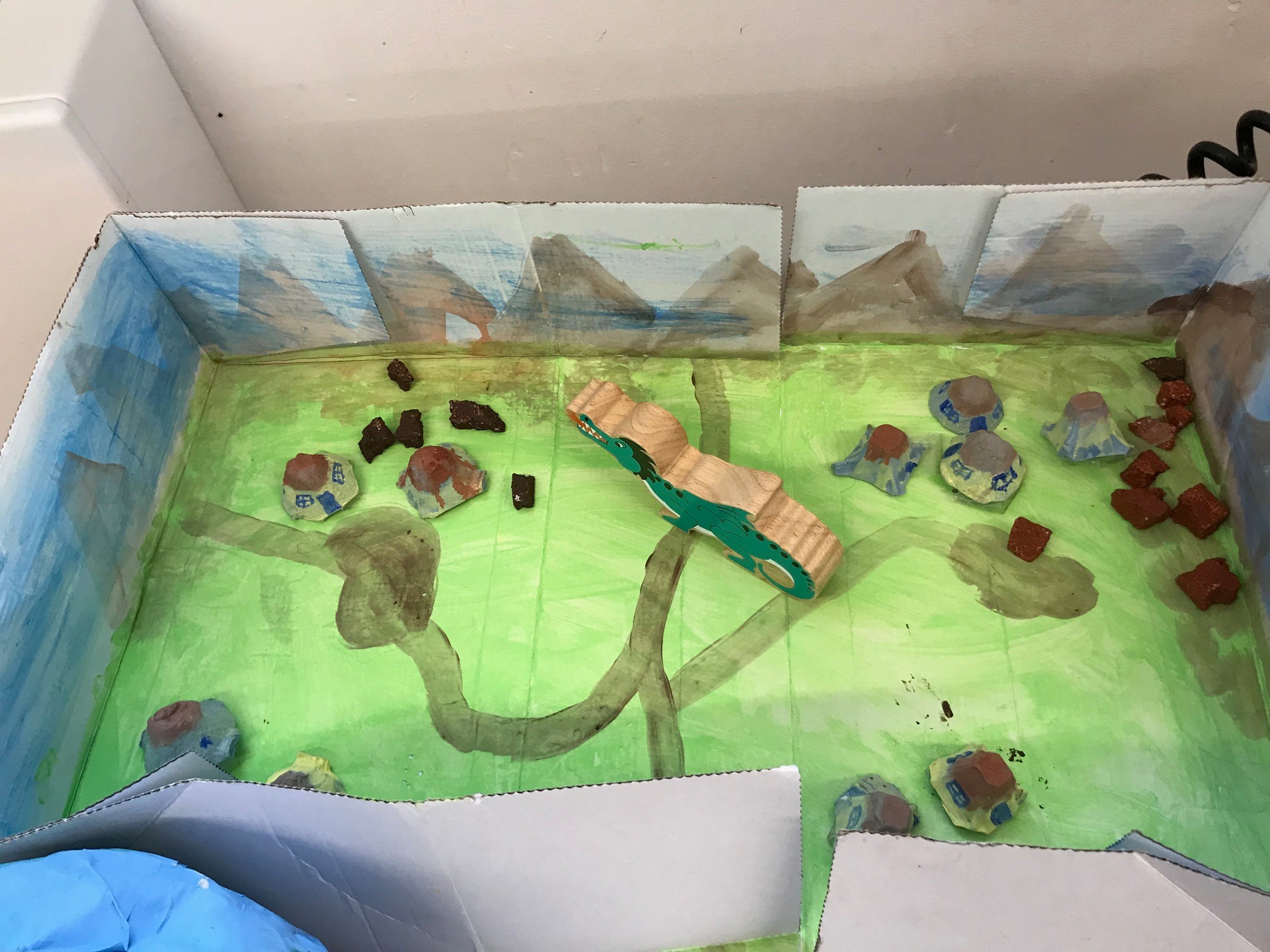 The children demonstrate their drive and passion to make their home learning the best it can be, with them capitalising on physical materials and resources, people and their skills and external agencies and organisations such as football clubs and experts. They are fully in control of their home learning project, communicating and sharing their plans with their family. Projects included;
The children demonstrate their drive and passion to make their home learning the best it can be, with them capitalising on physical materials and resources, people and their skills and external agencies and organisations such as football clubs and experts. They are fully in control of their home learning project, communicating and sharing their plans with their family. Projects included;
- ‘What if there was no rain?’
- ‘Why is the world a sphere?’
- ‘Which season was Newcastle United’s best in my lifetime?’
- ‘How bad is the traffic where I live?’
- ‘Can humans live on Mars?’
Children completed their home-learning projects in a variety of ways:
- formal presentations of what they had discovered
- 3D models of ‘what if…’ possibilities
- fictional stories
- computer presentations
- information booklets and surveys.
Across all ages, there’s wide variety of questions posed by the children. They were inspired by their learning in school (plastics and pollution, the changes in Britain during the industrial revolution, the changes throughout history for those who were rich and those who were poor in society, statistics in maths and space in science). After completing their projects, all children reflect on their outcomes (as well as the learning opportunities they had been afforded through this challenge) and how they had stretched the learning behaviour they identified.
Ask yourself: Are my students sufficiently mature and independent to rise to the challenge of such a task?
If ‘yes’, then what is stopping you?
If it’s a ‘no’, ask yourself why not? What are Hallbankgate doing to grow independence that might be useful to you? [ see blog 3]
5. Make reflecting on being absorbed part of everyday lessons
Learning Mats
Here’s a very practical example of how you might develop the emotional climate of the classroom and make it flow friendly.
Learning mats are A4 laminated sheets that show various aspects of a learning habit. Keep them as prompts on desks/tables or as part of a wall display. Use them to enable reflection and inform self-regulation.
NB. None of the suggestions above will lead students to instantly understand flow, nor instantly change their behaviours. You will need to drip these, and other ideas, in over time and keep refreshing your language of learning.

![Classroom ideas to enable flow.[Flow #4] flow 4](https://www.buildinglearningpower.com/wp-content/uploads/2021/04/flow-4-200x200.png)
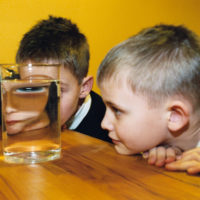
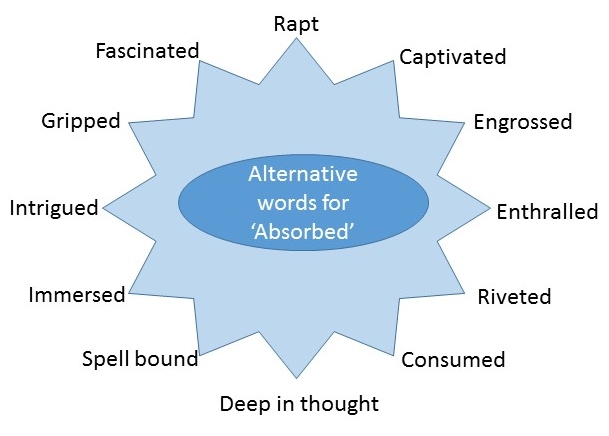
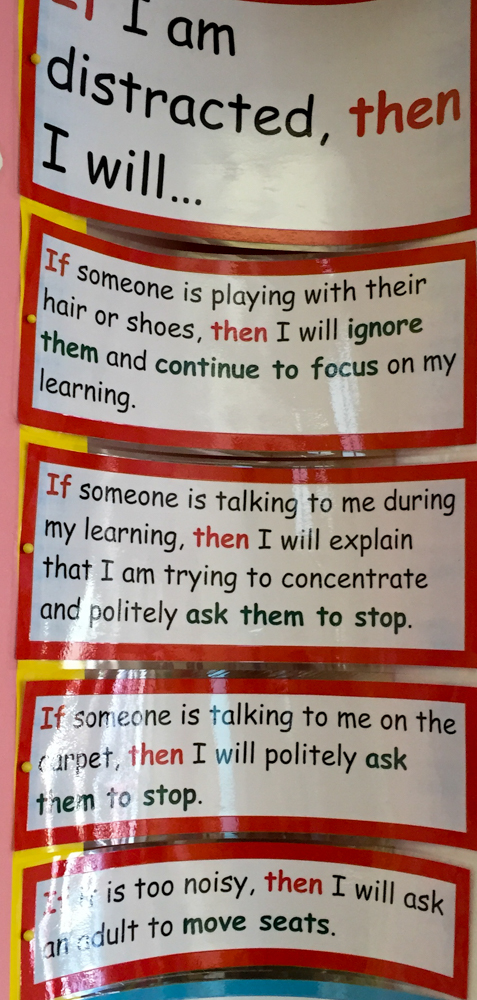
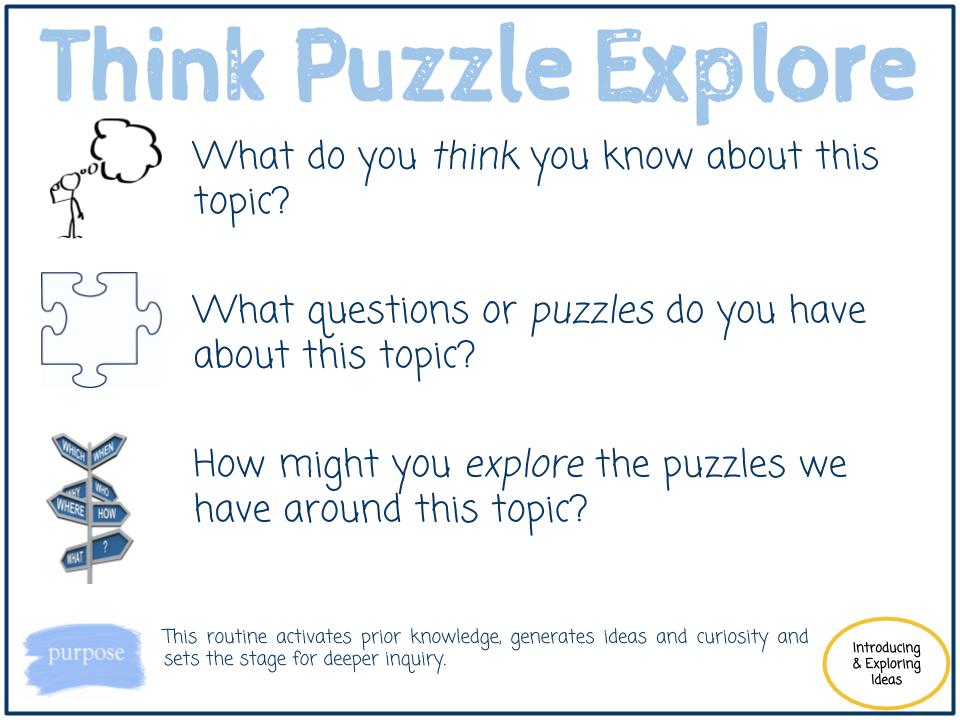
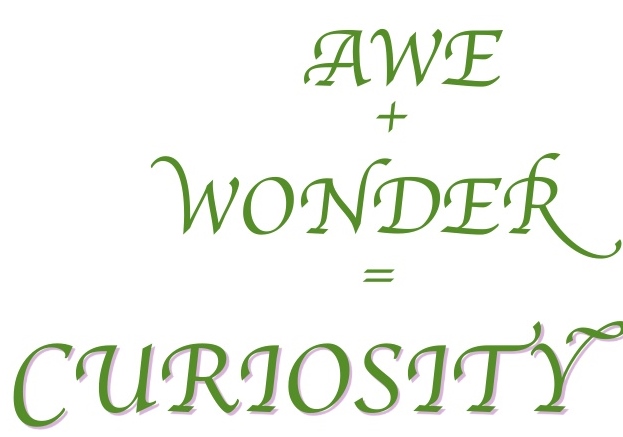
Using BLP has enabled me to see my students delve into learning.